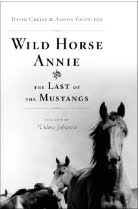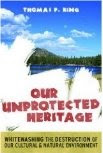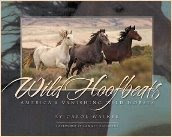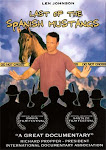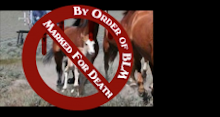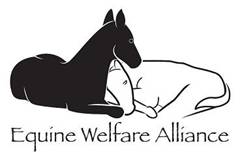In 1971, when Congress passed the Wild Free-Roaming Horse and Burro Act, the BLM was legally mandated to reverse course; going from actively hunting and killing wild horses and burros in order to reserve forage exclusively for livestock to now being required to protect and preserve wild horses and burros and their habitat instead.
There are many historical accounts of how this change in federal mandates did not sit well with many in the agency or the livestock operators personnel and their families had to work and live with in what were often remote regions throughout the West. Ingrained attitudes of prejudice and political pressure continued to operate behind the scenes from all sides and history has documented the long road of intolerance levied against our wild herds.
As the public felt assured through the passage of the Act that America’s mustangs and burros would now be legally protected and preserved, many moved on to the business of living, falsely believing the herds were now safe from inhumane hunting, slaughter and rangeland “thugs”.
Yet to those whose income depended on revenue generated from public resources such as livestock, oil, mining and gas, their business of living caused them to never forget the mouthful of grass each wild horse consumed. From the time the Act was passed, they have led a ceaseless march to undermine those protections and whittle away our herds.
With wallets fat from the harvest of public lands subsides, they were poised to buy the ears of enterprising politicians and subsequently, the legal protections granted wild horses and burros were continuously eroded and constantly under attack.
The stratagems employed were multi-leveled, ranging from proposals that were “site specific” to sweeping land use plans issuing decisions affecting millions of acres of public resources, compromised of management “alternatives” both proposed and approved by the agency, as well as employing tactics on every level in between.
Herds and habitat would be zeroed out under “new” amendments, documents referenced in support of their decisions often demanded a Freedom of Information Act request to gain access too, new regulations and policies were continually being cranked out; from the Federal Register, from the National Wild Horse and Burro Advisory Board, from Resource Advisory Councils stacked heavily with livestock permittees, from internal agency memos that altered long standing policies and finally, sometimes BLM just asserted “professional discretion” to those who tried to challenge them legally or within the meeting rooms that carve up public lands.
As for the players behind the scenes, they had nothing but time, funds and connections to network their agendas in order to block, obscure and manipulate both state and federal laws to serve their interests, which of course were not in the interests of America’s free-roaming herds.
Since Nevada is home to the majority of America’s remaining wild horses, the political persuasions and history that comprise the backbone of wild horse country help illustrate the insidious process behind the decisions that continue to impact our Living Legends throughout the West, such as found within the Ely District’s newly approved Resource Management Plan.
The Sage Brush Rebellion, a phrase coined for a coalition of cattlemen, mining and timber interests, began going head to head with the federal government for what they considered unfair control of their land and property, even though “their land” and all the federal subsides that come with it, are legally described as public land.
The state of Nevada is often referred to as the cradle of the Sagebrush Rebellion and long-time Winnemucca cattleman Dean Rhodes has been attributed as holding the prestigious titles of both Founder and Father.
When Father Rhodes was not devoting his life to ranching, he was devoting it to climbing Nevada’s political ladder. Today, we can find him dispensing his brand of federal defiance from the halls of the Nevada legislature. He currently serves as a Nevada Senator, chairperson of the Senates powerful Natural Resource Committee and the Nevada Interim Committee on Public Lands. However, Father Rhodes couldn’t do it alone and when it comes to the Sagebrush Rebels, the Ely District may lie at very heart of the Rebellion's instigators and supporters.
“Wise Use Withers?” an article published by Ted Williams in 2002, was about the Sagebrush Rebellion copycat movement re-branded as Wise Use for more palatable public ingestion. The article quoted Newt Gingrinch as stating, “We have to find a way to build a bigger coalition” while Dan Barry from CLEAR, a professional watcher of the movement said, “Wise Use is down but not out. There are a lot of signs that it is getting serious about developing political maturity-media outreach, funding and real grass-roots activism.”
More Nevada based politics rippled out as Nevada Senator Harry Reid was also rumored to be the co-sponsor of the despicable 2005 Burns Amendment (a rumor Senator Reid adamantly denied), which repealed wild horse and burro protection from slaughter and instead mandated every wild horse and burro over 10 years old or failing to be adopted after three tries be sold without limitation until every one of them had been disposed of.
Yet evidence suggests the inception of the Burns Amendment’s was taken straight from the text of a 1998 Wild Horse Management Plan(1) mandated from Nevada’s own legislature. The plan was paid for by the Nevada Commission for the Preservation of Wild Horses, originally created to protect and preserve Nevada’s wild horses from funds obtained from the last will and testament of concerned philanthropist, Leo Heil.
So how exactly did Conrad Burns get a hold of this text if not for Senator Reid, who has continued to do nothing to repeal the Burns Amendment or investigate the Wild Horse and Burro Program? Click Here to learn more.
By the way, most of the now broke and soon to be defunct Wild Horse Commission’s funds are currently sitting in Texas. In yet another deal gleaned through the Nevada legislation in 2003, a legal cap on the Commission’s annual expenditures was repealed in order to form a partnership with BLM (to the tune of $400,000 each) in the creation of the Mustang Heritage Foundation.
So is it any wonder, as the details have been uncovered regarding Ely’s hot-off-the-press Resource Management Plan, little adherence to national law, regulation or policy was found?
According to BLMs Code of Federal Regulations, “If necessary to provide habitat for wild horses and burros, to implement herd management actions, or to protect wild horses and burros from disease, harassment or injury, the authorized officer may close appropriate areas of public lands to grazing use by all or a particular kind of livestock”, CFR 4710.5(a).
How can BLM justify 545,267 Animal Unit Months (AUMs) given to livestock within their jurisdiction, continue to authorize year long livestock grazing within the very same areas wild horses were zeroed out from all the while maintaining their actions are legal?
Meanwhile, BLMs Wild Horse and Burro Division Chief, the head honcho of the Program, looked me right in the eye with a group of others who attended the Wild Horse and Burro Summit this last October in Las Vegas and stated not once, but twice, he didn't know a thing about it. Common on, give me a break! However, if he was sincere, it would go a long way in explaining how the Program has elevated to the current level of crisis.
The Wild Free-Roaming Horse and Burro Act required wild horses and burros to be preserved in the areas they were found in 1971 and in order to accomplish this, BLM is required to “consider them comparable with other resource values in the formulation of land use plans”, CFR 4700.0-6(b).
How does this land use plan preserve them in those legally designated areas, provide comparable consideration of resources and conform to multiple use mandates within those areas now zeroed out as BLM’s newly issued score card now reads: Livestock 100% - Wild horses 0%?
Another one of BLMs mandates states, “Management shall be at the minimum level necessary to attain the objectives identified in approved land use plans and herd management area plans”, CFR 4710.4.
It has already been clearly established BLMs land use plans objectives require them to give equal consideration to wild horses and burros, which they obviously did not, yet here we also find BLMs unchallenged interpretation of “minimal management” to mean zero wild horses or habitat while Herd Management Plan has been interpreted to mean plans that will only manage livestock and big game.
If the objective was truly “minimal management” without incorporating the need to do what was necessary to preserve them, why pass the Wild Free-Roaming Horse and Burro Act at all?
Furthermore, how does spending millions of dollars to remove wild horses and burros under the guise of protecting the range and its forage, which is then re-allocated to livestock, meet BLMs minimal management objectives? How does BLM spending millions more to provide water in long-term holding troughs versus developing reliable water sources on the range meet this minimal criteria or their federal obligations to protect and preserve them?
BLM is also required to “manage wild horses and burros as self-sustaining populations of healthy animals in balance with other uses and the productive capacity of their habitat” CFR 4700-6(a).
Yet the recent decision issued for the Ely RMP, which included the Delamar Herd Management Area, is a glaring example of abuse of discretion, authority and the public trust. While BLM acknowledged there was sufficient water, forage, space and cover for wild horses, the only factor cited by BLMs as reason to zero them out was the population level they themselves established as being "non-reproductively viable".
With regards to the productive capacity of the habitat, BLM has affirmed the Delamar livestock allotment is productive enough to support 454 head of cattle year round but somehow, they found it is no longer productive enough to support wild horses on this same range?
The illegally sanctioned actions continued as a Protest was filed with BLM in December 2007 regarding the Ely District's Proposed Plan. Click Here to review.
Due to the passage of the Wild Free-Roaming Horse and Burro Act, wild horses and burros are considered a “Special Status Species” due to the protections afforded them through the Act. In addition to being federally protected, they are also a state protected species through Nevada Revised Statutes (NRS 504.430 to 504.490).
BLM even defined special status species in the Ely Proposed RMP as, “Special status species include federally listed, proposed, or candidate species, state protected species, and BLM sensitive species” and according to BLMs Land Use Planning Handbook, BLM is required to “re-initiate consultation in land use plans when there has been significant change since the original consultation was completed. Based on these criteria, consultation on land use plan and implementation decisions must be reinitiated if any new information shows that the plan decisions may affect Special Status Species or critical habitat in a way or to an extent not previously considered.”
One of the protest points submitted to BLM was the need to consider and incorporate the new August 2, 2007 ruling by the Interior Board of Land Appeals (172 IBLA 128) regarding wild horse management, as IBLA decisions are suppose to legally bind the actions of the Department of the Interior.
IBLA ruled there is nothing in the Wild Free-Roaming Horse and Burro Act prohibiting BLM from augmenting wild herds to prevent inbreeding and bolster genetic viability in wild populations. Therefore, the premise that a herd could be zeroed out merely because of low population levels was thrown out by IBLA but yet again, neither BLMs own policies instituted for land use planning or the rulings of IBLA mattered as they continued their trek towards the managed extinction of America’s free-roaming herds.
In a 1998 Congressional Subcommittee Hearing held in Reno, Nevada(2), Lincoln County Commissioner Rey Flake shared his vision of the future for wild horse management as “having one or two herds of horses in each state”. It is worth noting that Lincoln County just happens to be part of the area found within the Ely District’s new Resource Management Plan.
The record shows Father Rhodes cast his vote for Commissioner Flakes vision by stating, “...we would probably put up some vistas and interpretive centers and so forth” then also added, “Then you could remove all the other horses from the west on much of our grazing lands.”
*********************************************************************
A "Prestige" is a term used by Magician’s to describe their top illusion, often coveted by others in the trade and saved as the shows Grand Finale. In what can only be considered the unfolding final act of the Magicians "Wild Horse Prestige”, many of the wild herds from the Ely area will soon join the ranks of tens of thousands like them, now potentially facing an authorized firing squad or if they’re lucky, perhaps they will come to live on Madeleine Pickens Wild Horse Sanctuary complete with vistas and interpreting centers, as the seeds planted by Nevada’s Sagebrush Rebels continue to ripen and bear their rotten fruit.
(1) Draft Nevada Wild Horse Management Plan for Federal Lands to the Department of Conservation and Natural Resources, Nevada Ecological Consulting, Inc., August 1998.
(2) 1998 Congressional Subcommittee Hearing of National Parks and Public Lands held in Reno on July 13th titled, “Field Hearing on Range Issues and Problems with the Wild Horse and Burro Act and Its Implementation.















